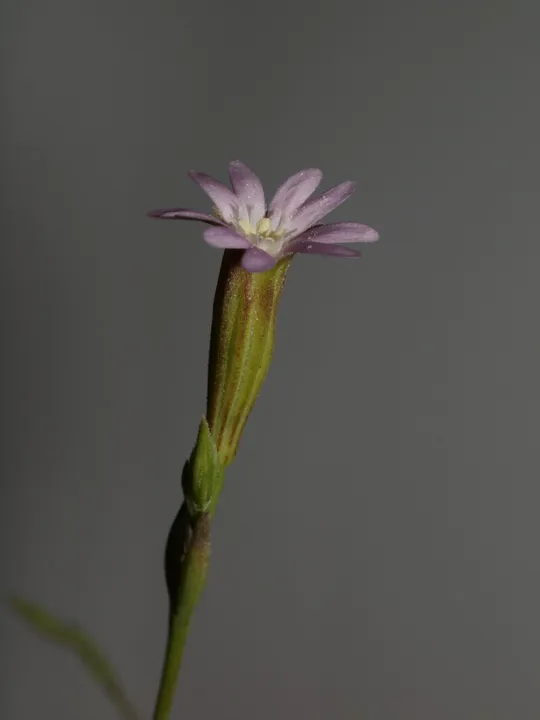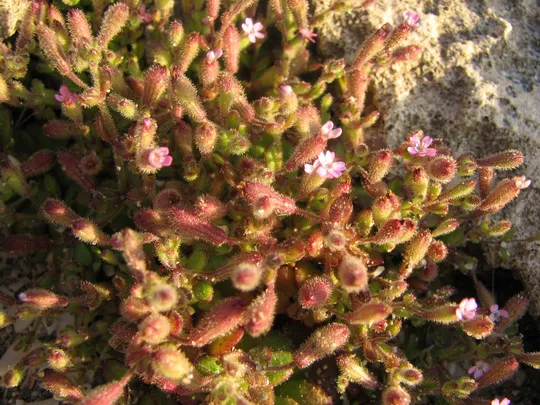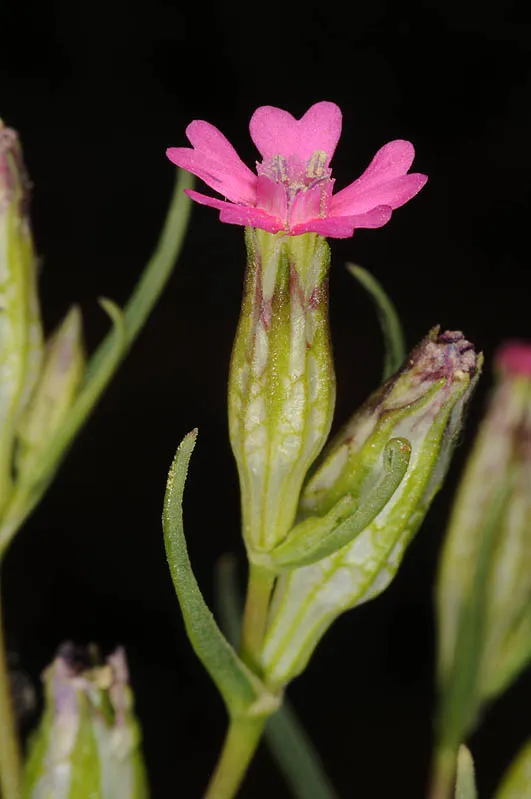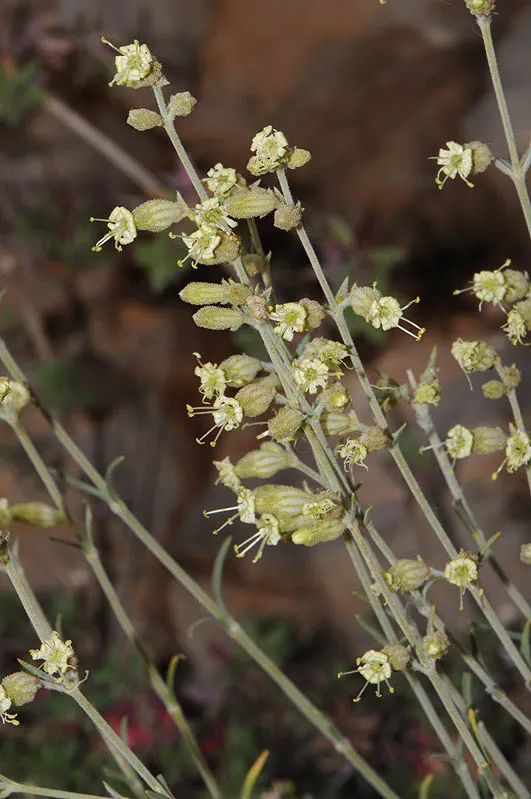Campion sp.
Silene oxyodonta
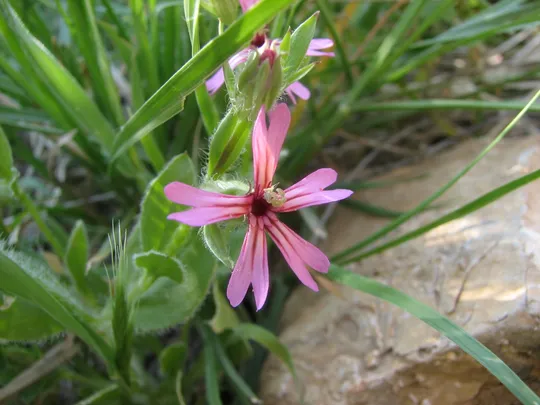
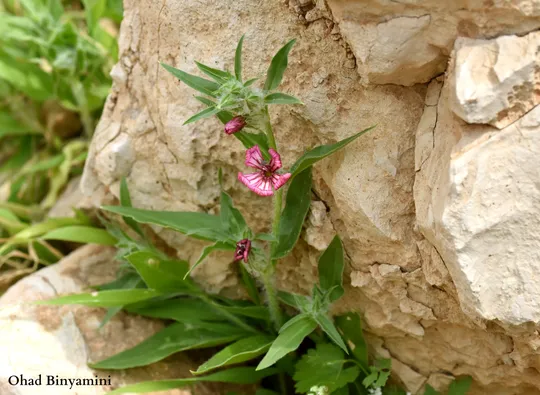
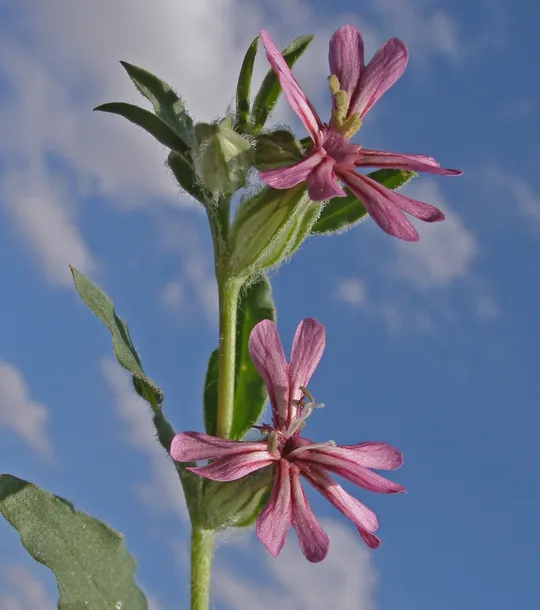
Silene oxyodonta grows in four regions:
the Samarian Desert, the Judean Desert, the Jordan Valley and the southern
Golan Heights, where it is found at ten documented sites although there are an
estimated 15. In the Samarian Desert, it was observed in Sartaba and in Wadi Yitav (Uǧa) and in the Jordan Valley in the Na'ama area. In
the Judean Desert, S.
oxyodonta is known
from Wadi Prat and Mount Karantel above Jericho. In the southern Golan Heights
it was collected in Wadi Metsar and Wadi Ruqqad.
Transition zone scrubland and herbaceous vegetation at its
edges.
Silene
oxyodonta, S.
gallica and S. tridentata
belong to the Silene section in the genus Silene. The species
in this section have a characteristic narrow-necked calyx with dentate lobes, a
hairy carpophore
and seeds that are not winged. S. gallica is a small-flowered plant that grows on sandy
soils in natural and disturbed habitats in the coastal plain and on non-calcareous
soils in the Golan Heights and lower Hermon. It is found throughout the
Mediterranean Basin and is an invasive weed in many other areas of the world. S.
tridentata has a small
pink corolla, almost hidden in its calyx, which is large and inflated,
particularly its lower section. This is a relatively rare plant found in Israel
mainly in the northern Negev. In the world, it is found throughout the arid
southern part of the Mediterranean Sea from the Canary Islands to Israel and
Jordan.
·
The information regarding Silene oxyodonta sites from the
early decades of the 20th century is scant and comes from only one region – the
Judean Desert, from Wadi Prat and the Jericho vicinity. Most of the collections
and observations in three regions are mainly from the 1970s-1990s. The small
number of earlier information makes it difficult to determine change trends, if
there were any. Since the 1990s there were also almost no reports of S. oxyodonta, except from Wadi
Yitav from where there are continuous observations, almost to this day.
·
The Wadi Yitav population numbers
hundreds to thousands of plants. Since S. oxyodonta is an annual, yearly long-term monitoring
from several sites is required to provide reliable estimates.
·
S. oxyodonta is protected in
Israel in the Wadi Prat Reserve.
·
The species is endemic to Israel and
Jordan, and the local threat level is equivalent to the global one. Data on the
distribution of S.
oxyodonta
in Jordan is lacking; there is need of surveys to determine the threat status
of S. oxyodonta there.
Surveys should be conducted to locate all the populations in the Samarian and Judean Deserts. This will provide an updated picture of its distribution, population size and change trends in relation to past knowledge as well as enabling a more reliable assessment of the current state. At the same time, surveys in Jordan from Gilead to Edom should be conducted in order to clarify the situation there. Seeds should be collected from known populations and propagated in botanical gardens as backup and possibly for future re-population.
Silene oxyodonta is endemic to
Israel and Jordan. According to the Flora Palaestina it is found in Jordan from
Edom to Gilead.
Silene oxyodonta is a rare
annual plant of the Samarian and the Judean Deserts and southern Golan Heights.
Its rarity, its endemism to Israel and Jordan and its large flowers relative to
other species of Silene determined its red plant status. Additional
surveys are needed to obtain an updated assessment of its threat status.
Current Occupancy Map
| 1000 squre meter pixel | 5000 squre meter pixel | 10000 squre meter pixel | |
|---|---|---|---|
| number of observations | 0 | 0 | 0 |
| in total pixels | 0 | 0 | 0 |
| Family | Caryophyllaceae |
| Classification | On the endangered species list |
| Ecosystem | Mediterranean |
| Chorotype | Eastern Mediterranean |
| Conservation Site | Wadi Yitav (Uǧa) in the Samaria Desert |
| Rarity |
1
3
6
|
|---|---|
| Vulnerability |
0
0
4
|
| Attractiveness |
0
1
4
|
| Endemism |
0
2
4
|
| Red number |
1
3.2
10
|
| Peripherality | 0 |
| IUCN category | DD EW EX LC CR EN VU NT |
| Threat Definition according to the red book | Vulnerable |
 Based on:
Based on:
